

Growing Tomatoes: Tips for a Bountiful Harvest
Introduction
Growing tomatoes is a favorite pastime for many home gardeners. Who doesn’t love the thrill of harvesting fresh, juicy tomatoes? The taste of homegrown tomatoes simply can’t be beat. In this post, we aim to share essential tips for successfully growing tomatoes in your garden.
To kickstart your tomato journey, consider investing in a Tomato Seeds Variety Pack. This pack offers a delightful selection of different types of tomatoes, ensuring you’ll have a colorful and tasty harvest. Plus, who doesn’t love a little variety in their garden?
Summary and Overview
When it comes to growing tomatoes, there are several key aspects to consider. First, variety selection is crucial. Different types of tomatoes thrive in various conditions, so choose wisely. Next, proper planting techniques can set your plants up for success. Once planted, care requirements like watering and fertilization will help your plants flourish. Finally, knowing when and how to harvest your tomatoes is vital for enjoying the best flavor.
Growing tomatoes not only enhances your meals but also offers a delightful gardening experience. You can choose from a wide range of types, from sweet cherry tomatoes to hearty beefsteak varieties. However, common challenges can arise, such as pests and diseases. With the right approach and proper care, you can overcome these issues and enjoy a bountiful harvest.
One way to tackle these challenges is with an Insecticidal Soap Spray. This handy solution helps manage pests without the use of harsh chemicals, keeping your garden eco-friendly and your tomatoes safe!
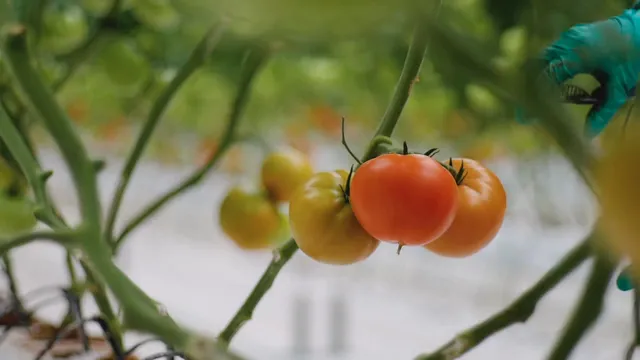
Choosing the Right Tomato Variety
Types of Tomatoes
When selecting tomato varieties, you’ll encounter two main types: determinate and indeterminate.
Determinate tomatoes grow to a set height, usually around 3 to 4 feet. They produce all their fruits at once, making them ideal for those who want to harvest quickly. These varieties often require less support and can be perfect for smaller spaces or containers.
In contrast, indeterminate tomatoes continue to grow and produce fruit throughout the season. They can reach impressive heights and need sturdy support, like stakes or cages. This type is excellent for gardeners looking for a continuous harvest, ensuring you have fresh tomatoes all summer long.
Understanding these differences helps you decide which type suits your garden and lifestyle. Whether you prefer the compact nature of determinate varieties or the ongoing production of indeterminate ones, there’s a perfect tomato for every gardener!
Speaking of support, consider adding some Tomato Plant Support Stakes. These sturdy stakes provide the necessary support for your plants, helping them grow upright and produce fruit without the risk of breaking or falling over.

Recommended Varieties for Beginners
If you’re just starting with tomatoes, consider beginner-friendly varieties. ‘Early Girl’ is a fantastic choice, maturing in about 50 days. It’s perfect for those with shorter growing seasons. Another great option is ‘Sweet 100,’ a cherry tomato that is exceptionally sweet and productive.
For those seeking flavor and diversity, heirloom varieties like ‘Brandywine’ and ‘Black Krim’ are excellent picks. They may require more care, but their unique flavors make them worth the effort. With so many options available, you’ll surely find the right tomatoes to grow in your garden!
And don’t forget to protect your investment with Neem Oil Pesticide. This natural solution helps keep pests at bay while being safe for your plants and the environment.

Soil Preparation
Soil Requirements
To grow healthy tomatoes, start with the right soil. Tomatoes thrive in well-drained, nutrient-rich soil. Aim for a slightly acidic pH, ideally between 6.2 and 6.8. This pH level helps tomato plants absorb nutrients effectively. Before you plant, consider conducting a soil test. This will reveal any nutrient deficiencies or pH imbalances. Knowing your soil’s condition allows you to make necessary adjustments for optimal growth.
For an easy soil test, grab a Soil pH Test Kit. It’s a small investment that can save you a lot of headaches down the road by ensuring your tomatoes get the nutrients they need!
For more detailed guidance on preparing your soil, check out this garden soil preparation resource.
Amending the Soil
Improving your soil is essential for a successful tomato harvest. One great way to do this is by adding organic matter. Organic Compost is an excellent choice. It enriches the soil and improves drainage. You can also mix in well-rotted manure for added nutrients. Additionally, consider using fertilizers. A balanced fertilizer can enhance your soil’s nutrient content, promoting healthy plant growth. Be sure to follow the recommended application rates to avoid over-fertilizing.
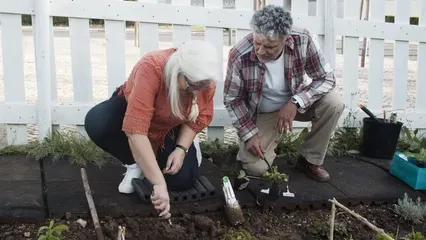
Planting Techniques
Timing for Planting
Timing is everything when it comes to planting tomatoes. Wait until after the last frost of spring. This ensures that your young plants won’t be damaged by cold weather. Check your local climate and frost dates for the best planting time. Generally, aim for soil temperatures above 60°F (15°C) for optimal growth. Another important step is the hardening off process. Gradually acclimate your seedlings to outdoor conditions over a week or two. This helps them adjust to sunlight and wind, making for stronger plants.
Planting your tomatoes at the right time and preparing them properly sets the stage for a fruitful season. With these steps, you’re on your way to enjoying delicious, homegrown tomatoes!

Planting Depth and Spacing
When planting tomatoes, depth and spacing play crucial roles in their growth. For optimal results, bury your seedlings deep, up to the bottom few leaves. This encourages stronger root systems and better stability.
For spacing, determinate varieties need around 18 to 24 inches apart. These bushes grow to a set height and produce fruit all at once. Indeterminate varieties, on the other hand, require more space, approximately 24 to 36 inches apart. These plants continue to grow and produce throughout the season, needing room to spread and develop.
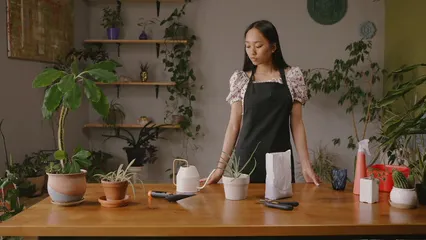
Watering and Fertilization
Watering Practices
Consistent watering is vital for growing healthy tomatoes. Aim for about 1 to 2 inches of water each week. This helps your plants thrive, especially during dry spells. Check the soil moisture by sticking your finger about an inch deep. If it feels dry, it’s time to water.
To prevent overwatering, use Drip Irrigation System or soaker hoses. This ensures water goes directly to the roots while keeping the leaves dry. Deep watering encourages roots to grow downwards, creating a more resilient plant.
Fertilization Schedule
Fertilizing your tomato plants correctly is essential for robust growth. Use a balanced fertilizer, ideally one higher in phosphorus, which supports flower and fruit production. Begin fertilizing about three weeks after planting.
Apply every two to four weeks throughout the growing season. Watch for signs of nutrient deficiency, such as yellowing leaves or poor fruit development. Address these issues quickly to keep your plants healthy and productive.

Pruning and Supporting Plants
Importance of Pruning
Pruning is a key practice for tomato health and yield. Regularly remove suckers, which are small shoots that grow between the main stem and branches. These suckers can drain energy from your plant, leading to smaller fruit.
Additionally, remove any dead or yellowing leaves. This helps improve airflow, reducing the risk of fungal diseases. Pruning not only encourages better fruit production but also keeps your plants tidy and manageable.
With proper pruning, your tomato plants can focus their energy on producing delicious, ripe tomatoes. The more you care for them, the better your harvest will be!

Support Structures
Supporting your tomato plants is essential for a successful harvest. By using cages, stakes, or trellises, you can keep your plants upright and healthy. This is particularly important for the indeterminate varieties that keep growing throughout the season. They can reach impressive heights and require sturdy support to prevent sprawling and damage.
For determinate varieties, a simpler support system may suffice. These plants typically grow to a set height and produce their fruit all at once. Staking them can help keep the fruit off the ground and promote airflow, which can reduce disease risk.
Don’t forget to equip yourself with a good pair of Gardening Gloves. Protecting your hands while working in the garden is important, and a good pair of gloves will keep them safe from thorns and dirt.
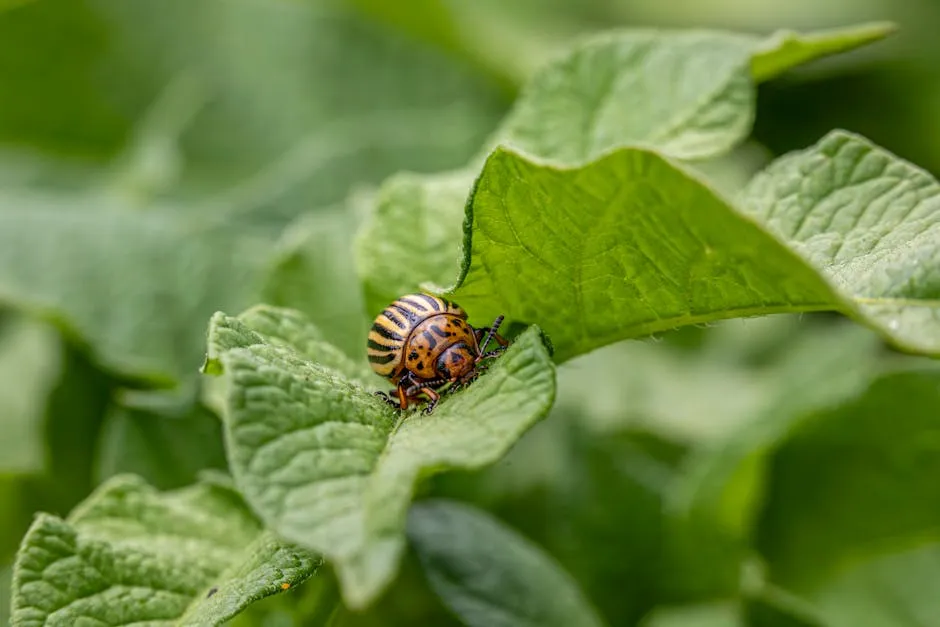
Pest and Disease Management
Managing pests and diseases is vital for thriving tomato plants. Regularly inspect your plants for any signs of trouble.
Common Pests
Common pests that target tomatoes include aphids, hornworms, and spider mites. Aphids are small and can be found clustered on new growth, while hornworms are larger and often blend in with foliage. You can control these pests organically by introducing beneficial insects like ladybugs or using insecticidal soap. Natural Pest Repellent Spray is another effective option that disrupts the life cycle of harmful insects without harming your plants. For more information on managing pests, read about the common pests in Japanese friendship gardens and how to control them.
Disease Prevention
Tomatoes are susceptible to several diseases, including blight and blossom end rot. Blight thrives in humid conditions, so ensure good airflow around your plants. Proper watering practices can prevent blossom end rot, which occurs due to inconsistent moisture. Crop rotation is crucial; avoid planting tomatoes in the same spot each year to minimize disease risk. Also, maintain garden hygiene by cleaning up any fallen leaves or debris, which can harbor pathogens.
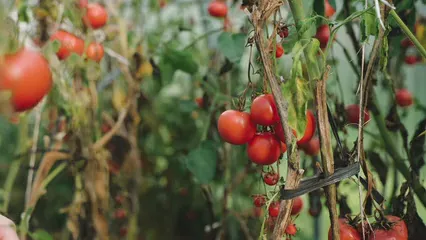
Harvesting and Storing Tomatoes
When to Harvest
Knowing when to harvest your tomatoes is key to enjoying their best flavor.
Signs of ripeness include a deep color and slight softness to the touch. For most varieties, the best time to pick is when they have fully colored up. However, some people prefer to harvest them when they’re slightly under-ripe, as they will continue to ripen at room temperature.
Indeterminate varieties produce over a long period, so check them regularly. For determinate varieties, harvest when the fruits have ripened, as they will all mature around the same time.

Storage Tips
Store your harvested tomatoes at room temperature for optimal flavor. Avoid refrigeration, as it can make them mealy and bland. If you have a surplus, consider preserving them with a Canning Kit for Tomatoes. This way, you can enjoy the taste of summer all year round!

Conclusion
In this post, we’ve covered key tips for growing tomatoes. From choosing the right variety to proper watering and pest management, each step is crucial for success. Remember, experimentation is key! Try different varieties and techniques to find what works best for your garden.
We invite you to share your tomato growing experiences or ask questions in the comments. Your insights and queries can help our gardening community thrive!
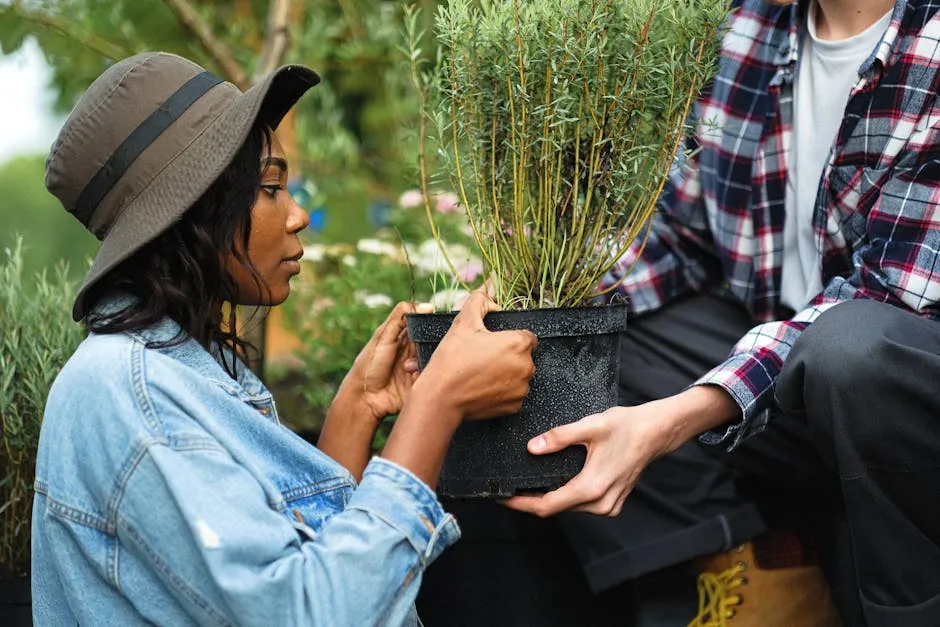
FAQs
What is the best time to plant tomatoes?
Plant tomatoes after the last frost, when soil temperatures exceed 60°F (15°C). Check local frost dates for accuracy.
How deep should I plant tomatoes?
Plant tomatoes deeply to encourage strong root development. Bury the seedlings up to their bottom leaves.
What are the signs of overwatering tomatoes?
Signs include yellowing leaves and wilting. Adjust your watering practices to allow soil to dry slightly between waterings.
Can I grow tomatoes in containers?
Yes, tomatoes thrive in containers. Choose large pots with drainage holes and use quality potting mix.
How do I know when to harvest my tomatoes?
Harvest when tomatoes are fully colored and slightly soft. Different varieties may have unique ripeness indicators.
What are the best companion plants for tomatoes?
Basil, marigolds, and garlic can improve tomato growth and deter pests. Pairing them can boost your garden’s health.
How can I prevent diseases in my tomato plants?
Use crop rotation, maintain good airflow, and remove any diseased leaves promptly. Regular inspections can help catch issues early.
Please let us know what you think about our content by leaving a comment down below!
Thank you for reading till here 🙂
All images from Pexels



